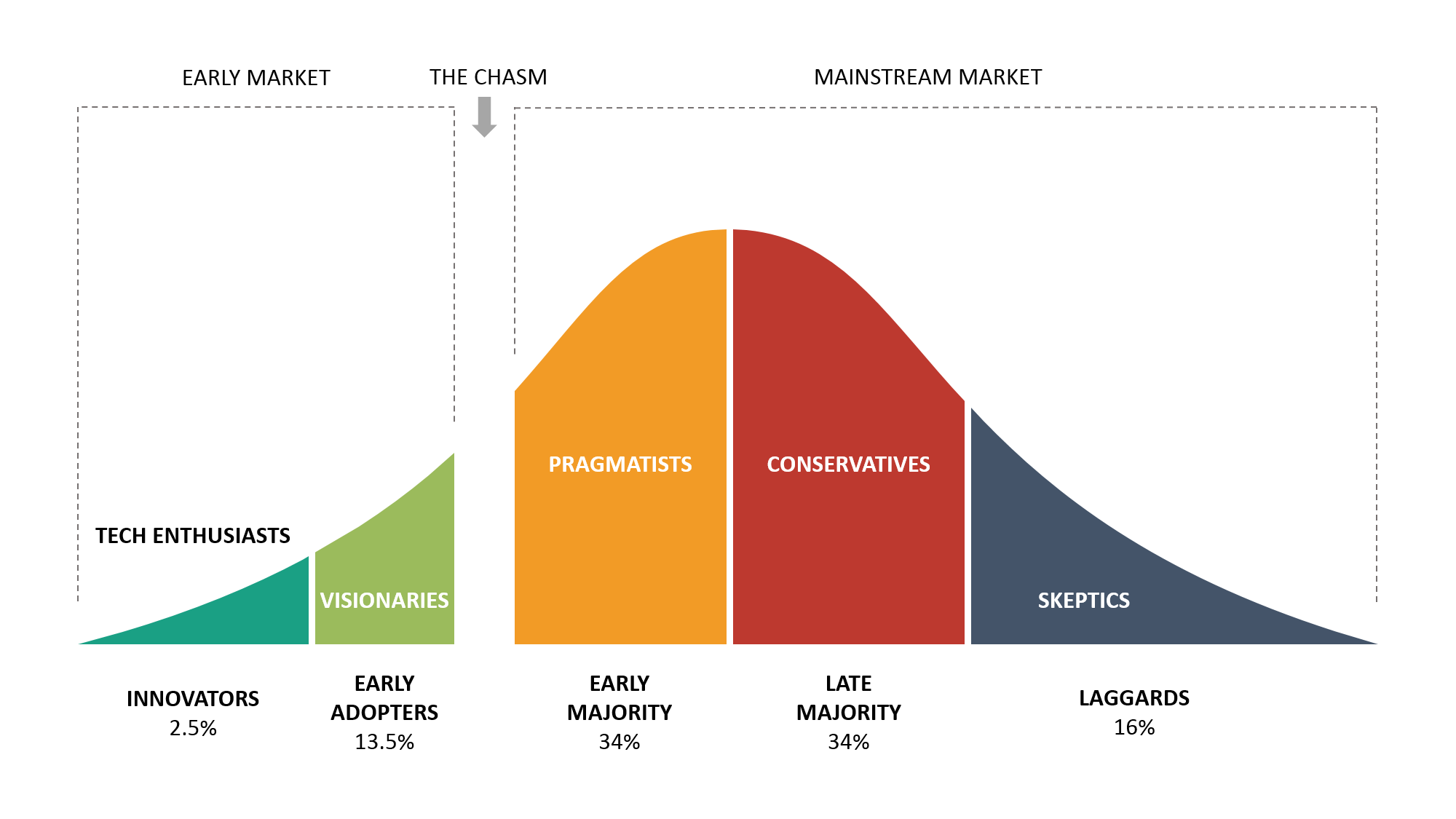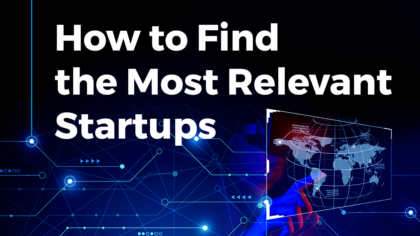As businesses grapple with the challenges of staying competitive, the right technological tools can be game-changers. That is why technology adoption is more relevant today than ever. The process involves recognizing, embracing, and integrating new technological innovations into your business operations. It is not just about procuring the latest software or gadgets — it is about assimilating these tools into your company’s workflow, culture, and strategic objectives.
What is the Role of Technology Adoption?
For corporations, technology adoption plays a crucial role in driving efficiency, fostering innovation, and maintaining a competitive edge. It is the bridge that connects a company’s current operations with its future potential. Adoption of new technology enables you to streamline processes, enhance customer experiences, and even open doors to entirely new revenue streams.
Technology Adoption vs. Technology Implementation
While they might seem synonymous, there is a nuanced difference between these two concepts. Technology implementation pertains to the initial setup and deployment of a new tool or system. It is the act of getting the technology up and running. On the other hand, technology adoption delves deeper, focusing on the full-fledged integration of this technology into daily operations, ensuring that its potential is fully realized and its benefits are truly harnessed.
What is the Technology Adoption Curve?
Everyone in a leadership role has faced the same challenge — answering the question “When is the right time to integrate a new technology into the business?”. In comes the technology adoption curve. It is a graphical representation that illustrates the acceptance and integration of new technology or innovation over time within a social system or market.
Originating from the Diffusion of Innovations theory by communication theorist and sociologist Everett Rogers, this curve categorizes adopters into different segments based on their willingness and speed to embrace new technology. The curve helps you understand where your target audience lies and how to strategize your product launches or marketing efforts accordingly.
American organizational theorist Geoffrey Moore further built upon Rogers’ theory in his book “Crossing the Chasm”. Moore’s primary contribution is the identification of a significant gap or “chasm” between the early adopters of a product (those who are quick to try new things) and the early majority (the more pragmatic group that needs more convincing).
The following graph shows the 5 stages of technology adoption. We will explore the details of each stage in the next section.

Image by Business-to-you.com
What are the 5 Stages of Technology Adoption?
1. Innovators (2.5%)
The brave pioneers! These businesses are the first to jump on board. They are the risk-takers, always on the hunt for the next big thing. With a keen eye on the horizon, they are not afraid to test uncharted waters, even if it means facing occasional setbacks.
2. Early Adopters (13.5%)
The trendsetters of the corporate world – these businesses have a knack for spotting potential before most. They are not as risk-prone as innovators but are open to new ideas, especially if they see tangible benefits. Their endorsement can significantly boost a technology’s market credibility.
3. Early Majority (34%)
The deliberate decision-makers. Such businesses take their time, watching the market, and learning from the experiences of innovators and early adopters. They jump in when they are confident of the technology’s stability and relevance. Their adoption is a strong signal that a technology has solid market acceptance.
4. Late Majority (34%)
Businesses in the late majority are the skeptics. By the time they adopt a technology, it is already well-established. They are cautious, often waiting for full market saturation or for any remaining kinks in the technology to be ironed out. Their eventual adoption, however, underscores the technology’s longevity and widespread appeal.
5. Laggards (16%)
The traditionalists. These businesses are the last to the party, often adopting technology only when it becomes unavoidable or when their existing systems are obsolete. They prioritize stability and familiarity over innovation.
Which stage do you think you are in?
7 Steps to Successful Technology Adoption
Incorporating new technology into a corporate environment is more than just a technical exercise — it is a transformative journey. To ensure that this journey yields the desired results for you, approach technology adoption methodically. Here is a step-by-step guide to seamlessly integrate and maximize the benefits of new technologies.
1. Needs Assessment
Begin with introspection. Understand the specific challenges your business faces and identify the gaps in your current technological landscape. This foundational step ensures that any technology you adopt addresses genuine needs, rather than being a solution in search of a problem.
2. Research & Selection
Once you have pinpointed your needs, dive into the market. Explore various technological solutions and assess their compatibility with your business. To simplify the process, turn to SaaS platforms that offer comprehensive overviews of various technological solutions, allowing you to easily compare features and gauge their alignment with your business objectives.
3. Stakeholder Engagement
Technology adoption is not only the IT department’s responsibility, it is a company-wide endeavor. Engage stakeholders from all levels – from top management to frontline employees. Their insights, concerns, and buy-in are crucial for the successful integration of any new tool or system.
4. Pilot Testing
Before a full-scale rollout, conduct a pilot test. Choose a department or a team to implement the technology on a trial basis. This allows you to identify potential challenges, gather feedback, and make necessary adjustments in a controlled environment.
5. Training & Support
Equip your team with the knowledge and skills they need. Comprehensive training sessions, workshops, and continuous support ensure that employees feel confident using the new technology. Remember, a tool is only as good as the person wielding it.
6. Feedback Loop
Encourage open communication by creating channels where employees are able to share their experiences, challenges, and suggestions regarding the new technology. This feedback is invaluable for refining processes, addressing concerns, and ensuring that the technology is meeting its intended objectives.
7. Review & Iterate
Technology adoption is not a one-time event, it is an ongoing process. Regularly assess the impact and effectiveness of the adopted technology. Are you achieving the desired ROI? Are there unforeseen challenges? Based on these evaluations, make necessary tweaks or even consider further upgrades.
Where Do You Find Relevant Technologies?
Finally, comes the real deal, where do you look for new technologies? Industry conferences and trade shows are often the first port of call. These events serve as hubs of innovation, offering businesses a firsthand look at cutting-edge solutions and an invaluable opportunity for direct engagement with the minds behind the tech.
However, in the vast ocean of technological advancements, finding the right solution for your business can feel like searching for a needle in a haystack. Depending solely on traditional methods like conferences can feel akin to venturing into a dense forest with only a candle to light the way. The time, effort, and resources spent attending these events, sifting through countless booths and presentations, can be exhaustive. And after all that investment, there is no guarantee you will find a solution tailored to your specific needs.
In the digital age, where information is at our fingertips and the pace of innovation is relentless, you need more efficient, targeted, and agile methods to identify and adopt the right technologies. Relying on traditional avenues alone is like using a compass in an age of GPS; it might point you in a general direction, but it lacks the precision and efficiency that modern solutions offer.
That is why you need to leverage Big Data and AI-powered platforms like the Discovery Platform. It is a comprehensive SaaS tool designed to empower businesses like yours to find emerging technologies with ease. Because it covers 20K+ emerging technologies globally, you can easily explore solutions that align with your specific requirements in just a few minutes. Instead of sifting through endless data, you get to streamline your technology discovery process, ensuring that you skip the usual hassles.
Conclusion
In the quest for technological advancement, knowing where to look is half the battle. As the corporate landscape continues to evolve, businesses that proactively seek and integrate new technologies will undoubtedly lead the pack.
Whether you’re scouring academic journals, building your network, or utilizing tools such as the Discovery Platform (our top pick), your company’s future is shaped by the technologies you adopt now. Leverage the power of technology and take your business to the next level.

![20 Best Chrome Extensions for Productivity [2024] - StartUs Insights](https://www.startus-insights.com/wp-content/uploads/2023/10/Best-Chrome-Extensions-for-Productivity-SharedImg-StartUs-Insights-noresize-420x236.png)


![How to Find New Companies aka The Next Big Thing [2024] - StartUs Insights](https://www.startus-insights.com/wp-content/uploads/2023/09/How-to-find-new-companies-SharedImg-StartUs-Insights-noresize-420x236.png)
